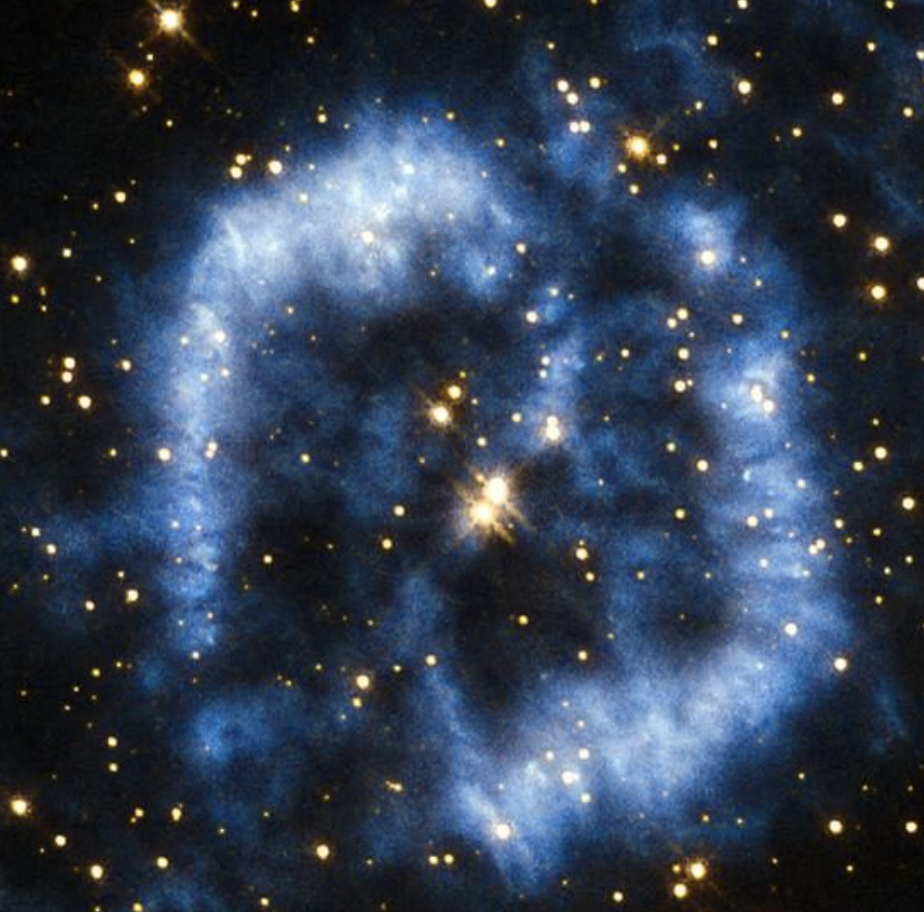929: #ClassicKenCroswell A white dwarf in Virgo tears apart asteroids in time. Ken Croswell @ScienceMagazine

Photo: No known restrictions on publication.2015.This planetary nebula is called PK 329-02.2 and is located in the constellation of Norma in the southern sky. It is also sometimes referred to as Menzel 2, or Mz 2, named after the astronomer Donald Menzel who discovered the nebula in 1922. When stars that are around the mass of the Sun reach their final stages of life, they shed their outer layers into space, which appear as glowing clouds of gas called planetary nebulae. The ejection of mass in stellar burnout is irregular and not symmetrical, so that planetary nebulae can have very complex shapes. In the case of Menzel 2 the nebula forms a winding blue cloud that perfectly aligns with two stars at its centre. In 1999 astronomers discovered that the star at the upper right is in fact the central star of the nebula, and the star to the lower left is probably a true physical companion of the central star. For tens of thousands of years the stellar core will be cocooned in spectacular clouds of gas and then, over a period of a few thousand years, the gas will fade away into the depths of the Universe. The curving structure of Menzel 2 resembles a last goodbye before the star reaches its final stage of retirement as a white dwarf. A version of this image was entered into the Hubble's Hidden Treasures image processing competition by contestant Serge Meunier. http://JohnBatchelorShow.com/contact http://JohnBatchelorShow.com/schedules Parler & Twitter: @BatchelorShow #ClassicKenCroswell A white dwarf in Virgo tears apart asteroids in time. Ken Croswell @ScienceMagazine http://news.sciencemag.org/space/2015/10/dying-sun-caught-tearing-apart-its-own-asteroids . "...Now, for the first time, researchers have seen this scenario unfold. Andrew Vanderburg, an astronomer at the Harvard-Smithsonian Center for Astrophysics, was analyzing data from Kepler, which detects planets when they block the light of their sun. "One of the white dwarfs suddenly popped up with this really intriguing signature," Vanderburg says. As his team reports online today in Nature, the white dwarf, located in the constellation Virgo and named WD 1145+017, has at least one, and probably several, asteroids that are disintegrating. As a debris cloud from each asteroid passes between us and the star, Kepler detects a dimming of the star's light. "It's fascinating," says astronomer Michael Jura of the University of California, Los Angeles, who was not part of the discovery team. "They've actually caught in the act the process of some asteroid breaking into pieces, being disrupted by the white dwarf host star." Indeed, the star itself is the asteroids' enemy. Its gravity has torn them asunder, and its light is vaporizing their rock. The asteroids are so close to the star that they revolve in just 4.5 to 4.9 hours; Vanderburg estimates they are roughly the size of Ceres, the largest asteroid between the orbits of Mars and Jupiter...."